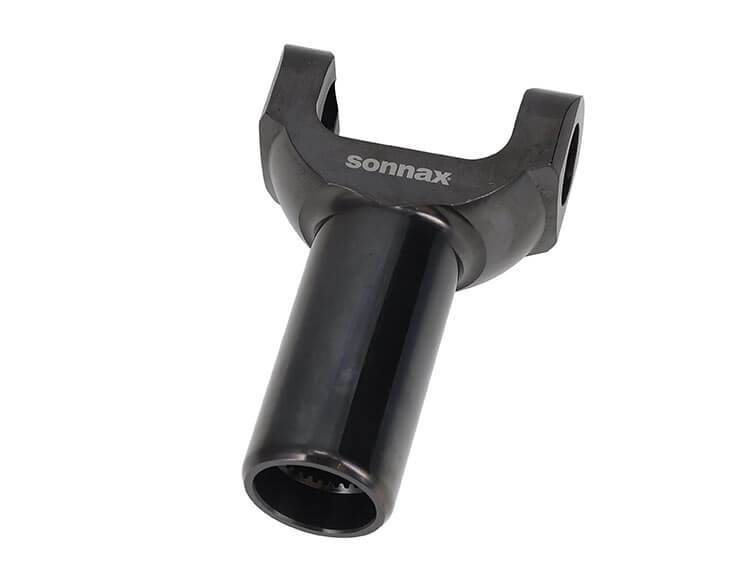February 21, 2020
Give Them the Slip — Avoid Comebacks with Sonnax Slip Yokes
During transmission overhaul, it often becomes necessary to fix problems outside of the transmission  in order to ensure your customer gets maximum satisfaction out of your build. For instance, in rear-wheel drive models you may sometimes find it necessary to replace the slip yoke. This could be because of a failed yoke, or maybe the U-joint was thrashed and the yoke was so rusty that simple joint replacement was impossible. As far as slip yoke choice, there are quite a few, and they are not all equal in price or quality.
in order to ensure your customer gets maximum satisfaction out of your build. For instance, in rear-wheel drive models you may sometimes find it necessary to replace the slip yoke. This could be because of a failed yoke, or maybe the U-joint was thrashed and the yoke was so rusty that simple joint replacement was impossible. As far as slip yoke choice, there are quite a few, and they are not all equal in price or quality.
When the need for a new slip yoke comes around, it can be tempting to throw the least expensive yoke available at the problem. After all, most customers are not going to race around in their daily drivers, so it is clearly overkill to sell them on a yoke that was built solely for high speed or torque conditions. But often the poorly made, cheap yokes that glut the market can bring unintended problems, for both the customer and the shop’s reputation.
Imagine completing the perfect transmission rebuild. Everything went back together well and the original problem was addressed, but soon after delivery the customer returns with one of several possible concerns such as:
- Leaking from the back of the transmission
- Noise, vibration and harshness (NVH)
- Clunking
- Shudder
These are problems often associated with poorly made slip yokes. Manufacturing processes for slip yokes are quite different from one supplier to the next, so even though many look the same, they are not. It is imperative that a yoke have the following characteristics:
- Concentricity
- U-Joint cross holes perfectly aligned
- High strength
- Balanced weight distribution
- Close tolerance to the output shaft, seal and U-joint
Because it is difficult to manufacture yokes with these characteristics, it is not surprising to find that many of the bargain-basement yokes on the market have impermissibly wide tolerance and often cause more problems than they solve. Yokes made this way place undue stress on the output shaft, seal, U-joint and driveshaft, not to mention excess stress on the yoke itself. This unnecessary and unplanned stress labors the components in a way they were not designed to work, rapidly fatiguing them and causing various failures. A well-built yoke avoids placing these stresses on the driveline, preventing excessive angles that cause premature wear and repeat joint failures.
It’s tempting to install a cheap yoke to trim cost during rebuild, but if that yoke induces NVH, your customer is unconcerned about the why; in their mind, it’s a shortcoming with the skills of the builder. As previously mentioned, it is very inexpensive to manufacture wide-tolerance pieces, so there are some cheap ones out there. But they are far more likely to cause problems, and most ruffled customers will tell you they prefer to spend a few more bucks up front to avoid a universal customer nightmare: bringing their vehicle back for a recheck.
Learn More
August 18, 2021
The Evolution of Two-Piece Axles
Related Parts
While Sonnax makes every effort to ensure the accuracy of technical articles at time of publication, we assume no liability for inaccuracies or for information which may become outdated or obsolete over time.
